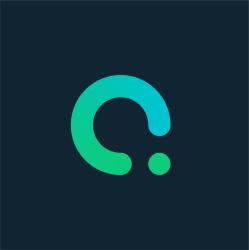At times when businesses have so many financial concerns, investing in UX may not always seem to be the top priority. This is particularly so when the return on investment (ROI) in UX is not always easy to define.
However, companies that fail to invest in UX often do so due to a lack of knowledge of the benefits, says Making Sense UX designer Martin Nedbal.
“Companies always have commercial and economic objectives but don’t always put the user at the center,” says the executive.
“If you create a good experience or service, you’ll see customers return by themselves,” Nedbal says, citing Netflix and AirBnB as good examples.
Business maturity determines UX investment
While many companies appreciate that UX can add considerable value, not all companies have the budget to invest in it, particularly early-stage startups.
There are also examples of companies that have been slow to digitally transform but over the last year were forced to create an online presence as their physical stores closed due to the Covid-19 pandemic, says Making Sense UX designer Valentín Zamorano.
“Often there is ignorance about the value of UX, but it is not intentional but rather a lack of awareness. You mustn’t criticize that but rather offer to help the client achieve their goals,” Zamorano said.
How to measure ROI of UX?
IBM has said that a US$1 investment in UX may result in an ROI of US$10-100. But how do you quantify that?
Measuring return on investment in UX can be seen in hard dollars (increase in sales, savings in development costs or customer support calls), or in soft dollars (customer loyalty and increases in productivity and efficiency).
The challenge many UX design companies face is in trying to convince c-level executives and decision-makers who are used to dealing with forecasts of hard numbers that the benefits of UX can be measured in less tangible ways such as greater employee engagement and productivity or increased customer satisfaction.
In general, any conversation with a client should start with establishing clear objectives from the outset. Sometimes this can involve some guesswork by the UX design team as the client may not know what it wants or be clear on what its problems are.
Metrics can be qualitative or quantitative, says Nedbal and the way you measure depends on each project. However, Making Sense generally looks at how the user uses the product or service and bases their measurement on three general criteria: efficiency, effectiveness, and satisfaction.
For hard metrics measurements, Making Sense evaluates task success, retention rate, conversion rates, and satisfaction.
But a mature company will look beyond hard numbers to how an improved UX can lead to a better internal company culture and that will result in improvements that are not always immediately evident.
“In more mature companies, the different areas of marketing or sales start to understand that there is a different way of doing processes and other methodologies to obtain their results. That is what makes a difference,” Nedbal said.
Know your customer
Researching the industry of your client and carrying out in-depth interviews is key to be able to make the best changes to UX.
“Getting to know your clients is beneficial not only in order to put them in the center but so that the whole team can empathize with their daily challenges and speak the same language,” Zamorano said.
You have to demonstrate with research that you are helping them in their business, Zamorano says, which can be difficult when you don’t have concrete numbers.
“When dealing with c-level executives, sometimes you have to move the discussion away from the usability of the design itself and talk about design outcomes that add value, such as time and cost savings,” adds Nedbal.
One of the least tangible examples of ROI when investing in UX is the reduced time spent in development in modernization. As UX designers can create, design, prototype, and simulate productivity cycles and solutions before actually developing anything this can lead to major savings for clients and avoid them making costly errors.
How to make a difference in a dairy farm
A good example of how qualitative improvements in UX can have an impact on quantitative results is Making Sense work with VAS.
Making Sense was tasked with improving the UX of a digital platform VAS provides to dairy farmers in the US to help them manage their herds.
The company realized that the legacy platform did not have an efficient customer support channel for processing user problems. The company changed the system from phone-in customer support to an online ticket system that would be fed to a service desk and allow multiple requests to be dealt with instead of answering calls one by one. This led to cost savings in customer support personnel.
For the same project, Making Sense modernized and improved the usability of the legacy mobile application that was used for scanning cows to determine whether they needed a vaccination.
The system was slow, had no visual indicators, and required much manual decision making, which would hold up productivity, according to Zamorano.
The faster cows are processed the more the time they have to rest and the more time they have to rest, the better the quality and quantity of the milk they produce.
With the changes, the cows could be processed faster so Making Sense was able to show how a qualitative improvement in the UX could potentially lead to quantitative gains.
“We couldn’t tell them how much more they would earn per liter of milk but we could say that if your worklist of tasks can be carried out 15-25% faster, that is a sales pitch for the dairy farmers,” said Zambrano.
“The metric we used was productivity and that is where the maturity of the company is significant for them to be able to see how this makes a difference,” Zamorano added.
